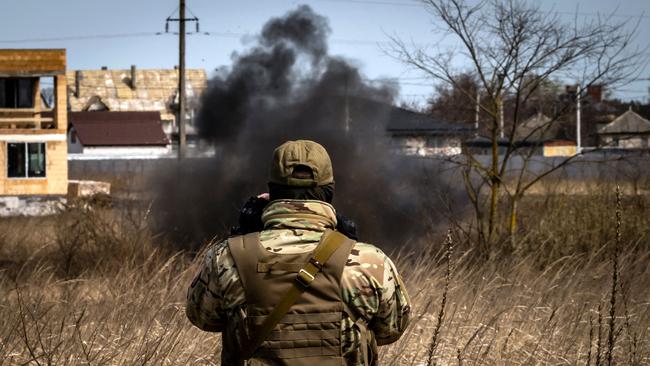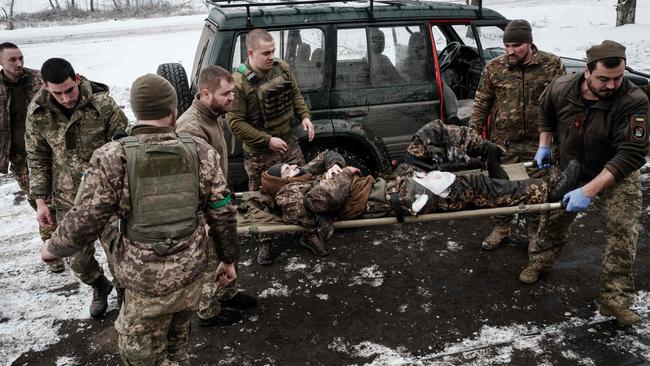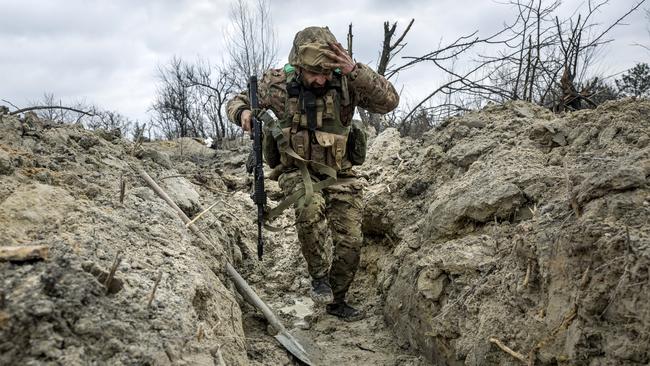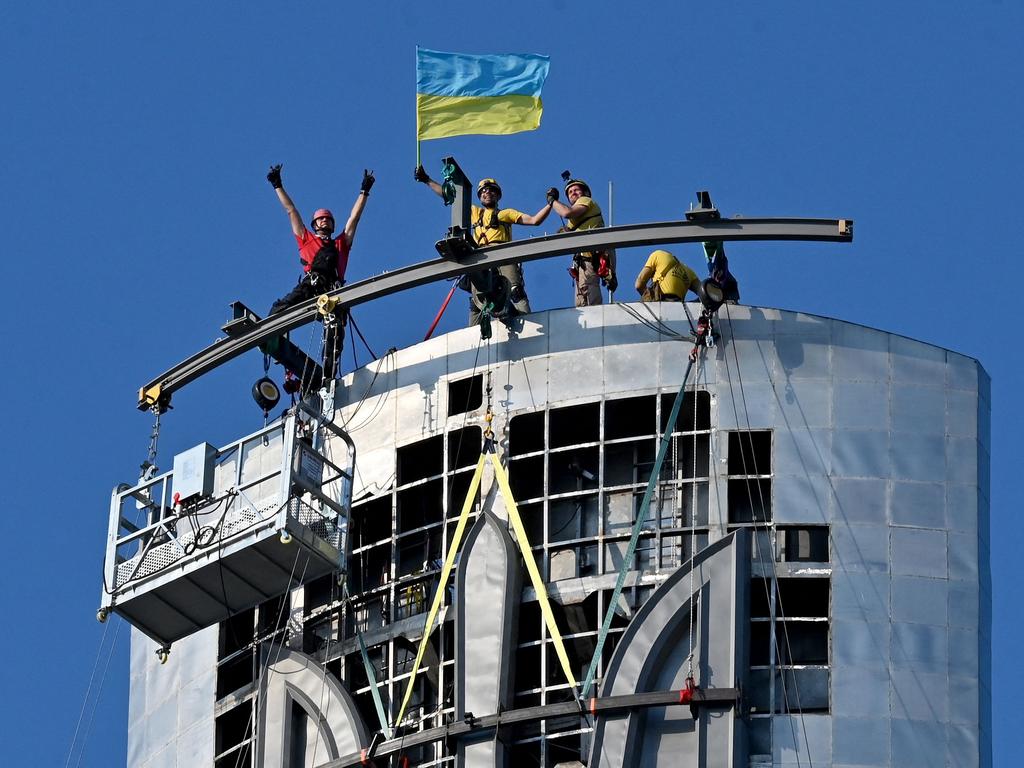‘We’re the suicide squad’ — The Ukrainian sappers clearing mines
For all the western tanks and armoured vehicles given to Ukraine, the fate of the counteroffensive may lie in the steady, mostly unarmed, hands of these specialists who come alive at night.

Armed with little more than a knife and a shovel, the sappers come alive at night, sneaking into no man’s land.
They work in silence under cover of darkness, creeping through the undergrowth looking for mines, the presence of a Russian explosive betrayed only by a vibration in the lead sapper’s metal detector.
The sappers go about their work sometimes just a few metres from the Russian trenches, often unarmed, and they are regarded by their brothers in arms with a mixture of awe and incomprehension. The infantrymen call them “hedgehogs”.
“They’re happy to see us even if they don’t always show it. We know they are just afraid of walking through the minefields. They would much rather let us go first,” said Aleks, 33, a sapper in the 35th Marine Brigade. He was a waiter before the war.
Some of the men were still recovering from concussion sustained during a 400-metre advance the previous day when The Times visited their base near Velyka Novosilka, western Donbas. One sapper had a clutch of freshly-won grenades swinging from his belt. He said his ears were still ringing from the previous day’s activities.
We watched as the sappers defused live mines in a sunflower field as they prepared for another foray into enemy-held territory, the distant thrum of artillery fire ever present. Cigarettes in hand, they threw around TM-62 anti-tank mines and set up booby-trapped twigs in the undergrowth connected to OZM-72 anti-personnel mines, taking care all the while to avoid a lethal step that would set off a grenade.
Not sure why this post was deleted. I don't think its offensive and it's my favorite, so I'm posting it againðŸ˜
— Ryan Hendrickson (@tipofthespear42) August 9, 2023
Little minefield humor with @MontyEOD2336 and @SM_EOD. "If this thing went off I'll never know it, but you can have my shoes ."
See https://t.co/WXX11WzNgb to support pic.twitter.com/pmT7qlnDzj
For all the western tanks and armoured vehicles given to Ukraine, the fate of the counteroffensive may well lie in the steady hands of these people.
Along a 750-mile stretch of front line that extends from southern to eastern Ukraine, Russia has created what some say is the largest minefield in the world. In addition to the mines, the defensive works along the so-called Surovikin Line – named after the Russian general who masterminded it but who has since fallen out of favour in Moscow – also contain “dragon’s teeth” anti-tank obstacles, razor wire and trenches.

Ukraine was forced to change its military tactics this summer when it became clear that it was losing tanks and fighting vehicles at an unsustainable rate as they sought to storm the Russian defences using the combined arms manoeuvre favoured by western armies. Videos emerged of Leopard 2 tanks, including Finnish mine-clearing versions, getting stuck in the booby-trapped fields before being picked off by Russian artillery and drones.
In an interview last month President Zelensky suggested that the failure to supply Ukraine with tanks and armoured vehicles earlier in the conflict had given the Russians time to lay the minefields, preventing Ukraine’s military swiftly punching through the defences. “I wanted our counteroffensive happening much earlier because everyone understood that if the counteroffensive will be unfolding later, then a much bigger part of our territory will be mined,” he told CNN.
“I’m grateful to the US as the leaders of our support. But I told them as well as the European leaders we would like to start our counteroffensive earlier, and we need all the weapons and materiel for that. Why? Simply because if we start later, it will go slower.”
The density of the minefields is now “insane”, according to Oleksiy Danilov, a senior Ukrainian security official, who estimated there were as many as four mines per square metre along the front line. Even as they retreat, the Russians are able to replenish the fields of death using modern Zemledeliye mine-laying vehicles.

As a result, the Ukrainian counteroffensive has had to proceed with painstaking care. Kyiv’s generals have chosen to ignore the political pressures from abroad and entrust their sappers to clear the minefields by hand, recapturing territory trench by trench, while artillery teams target logistical hubs deep behind enemy lines with long-range fire.
The day before they showed off their de-mining techniques to The Times, the sappers of the 35th Marine Brigade had been tasked with clearing a stretch of no man’s land after a Ukrainian, Soviet-era UR-77 mine destroyer was blown up by the enemy. They created an 8m-wide path through the minefield, marking it with yellow tape to allow the brigade’s assault troops to pass through and storm the next Russian position.
“It’s just not logical to use tanks. Much better to send two or three people at night quietly to clear the mines. That’s the proper way to do things,” said Roma, 32.
Even before they can begin deactivating anti-tank mines, which involves unscrewing the mine’s fuse using a Ukrainian-designed device called a DZM-1, the sappers have to avoid a gruesome array of Russian booby traps.

These include grenades attached to fishing lines that snag on to their clothes to pull out the pin, metal bear traps that snap shut on their legs, and anti-personnel mines triggered by the magnetics in their metal detectors. The Russians have even been known to rig up explosives to the bodies of dead soldiers.
The infantrymen sometimes joke that the sappers are “single-use items” but they prefer their own black humour. “We’re the suicide squad,” said Mikhail, 36.
In addition to clearing mines, the Ukrainian sappers also lay them, and they take a creative approach to setting traps, salvaging C4 explosives from Russian mines and then dropping them back on to enemy positions from Vampire drones. “They brought the mines here so they can’t complain if they die from them,” said Yaroslav, the brigade’s head engineer.
For all their gallows humour, the brigade had lost a sapper a few days earlier in a clash with enemy troops and were reluctant to talk about comrades who had perished.
Despite the losses, Aleks, one of the few sappers in the company not to have worked as a builder before the war, exhibited a quiet confidence that they could outperform their Russian counterparts. “The Russians go for quantity over quality. Their technique is quite messy but they are constantly dropping more. We’re making progress though. Be it tens of metres, hundreds of metres or a few kilometres every day, sooner or later we will get to the coast,” he said.
Additional reporting by Sergiy Khomyshynets
The Times







To join the conversation, please log in. Don't have an account? Register
Join the conversation, you are commenting as Logout